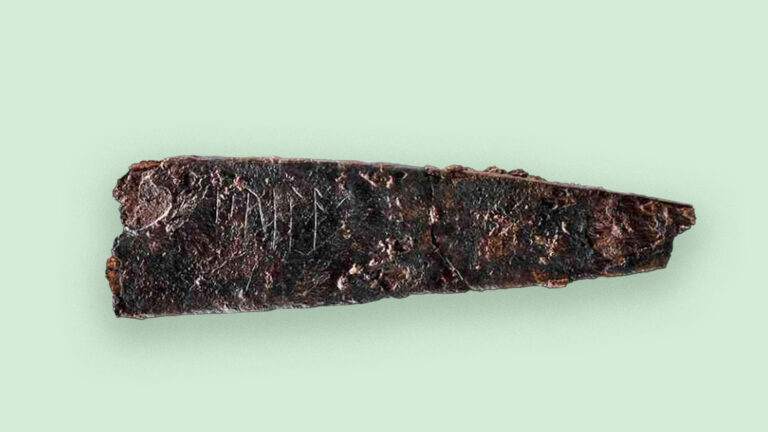
Archaeologists at the Museum Odense have identified Denmark’s oldest runes inscribed on a 1,850-year-old knife blade. The inscription consists of five runes with three depressions that runologists have interpreted as “hirila,” meaning “Little Sword.” The runic script is Proto-Norse, the oldest known runic alphabet, and the context dates the blade to around 150 A.D.
The knife was discovered by Museum Odense archaeologists in a burial ground in Tietgenbyen, east of Odense. It was one of several artifacts in an urn grave. Among the grave goods were three fibulae of a type that was only in use for a very brief period in the mid-2nd century A.D., the Early Roman Iron Age. The knife blade could then be indirectly dated to around the same time.
When the blade was first unearthed, it was coated in a layer of rust that obscured the inscription. Conservators spotted the runes after cleaning the corrosion and contacted National Museum runologist Lisbeth Imer. She examined the blade under a microscope and was able to translate the runic inscription.
Read the rest of this article...
No comments:
Post a Comment